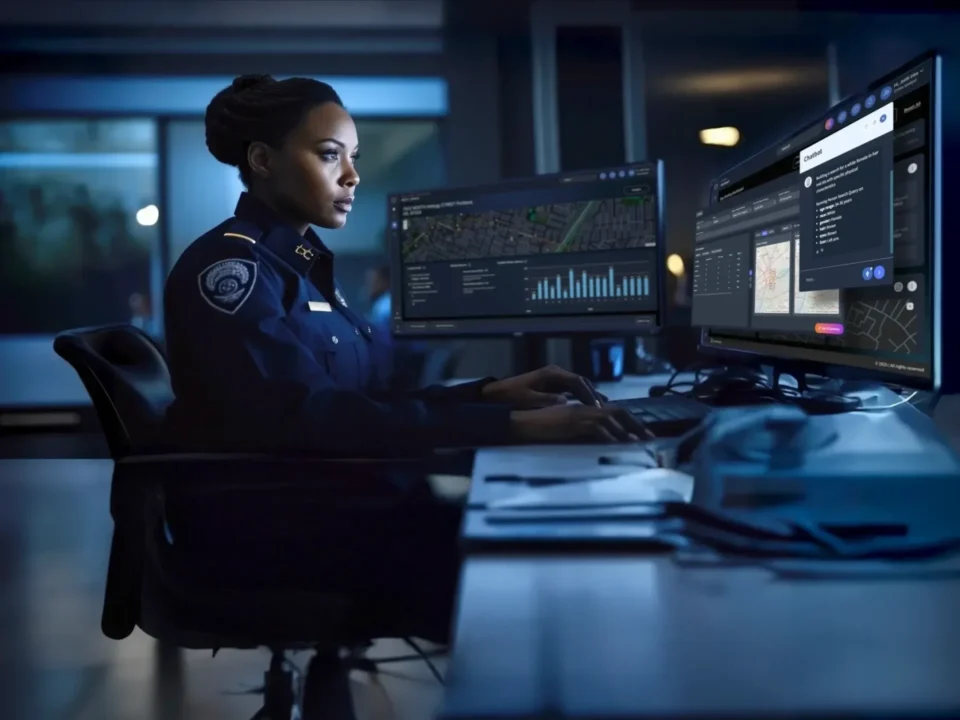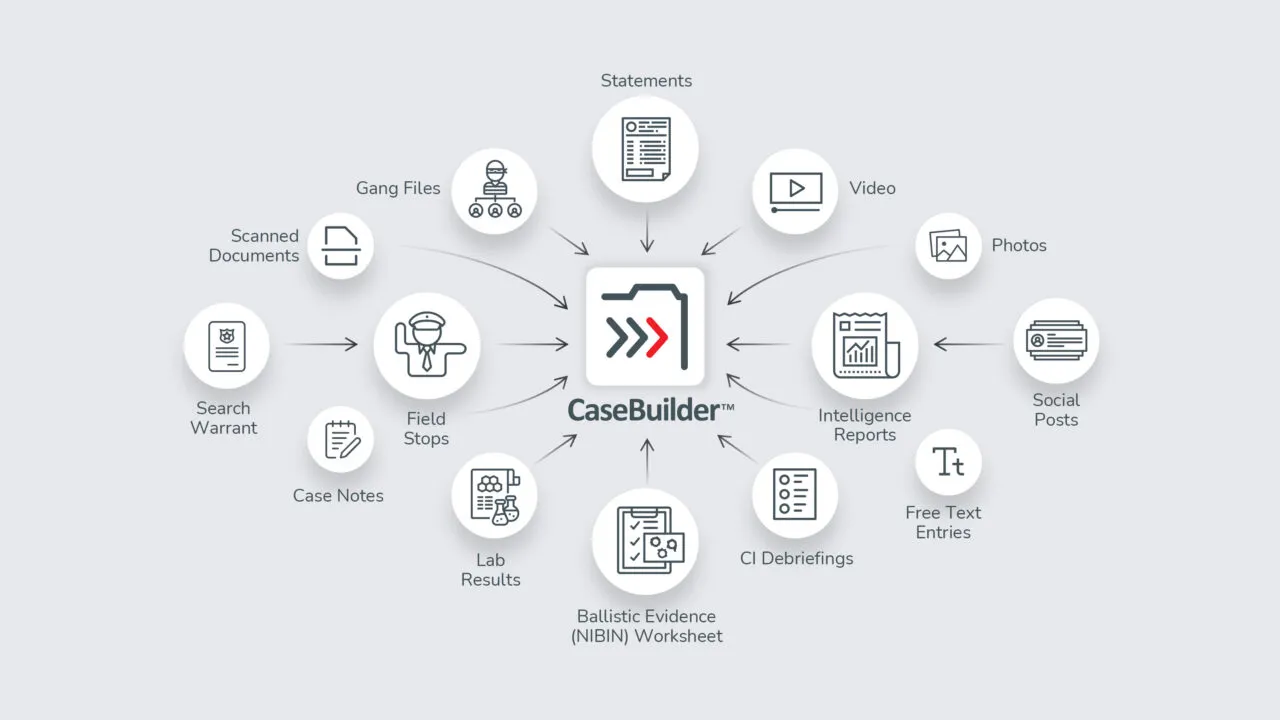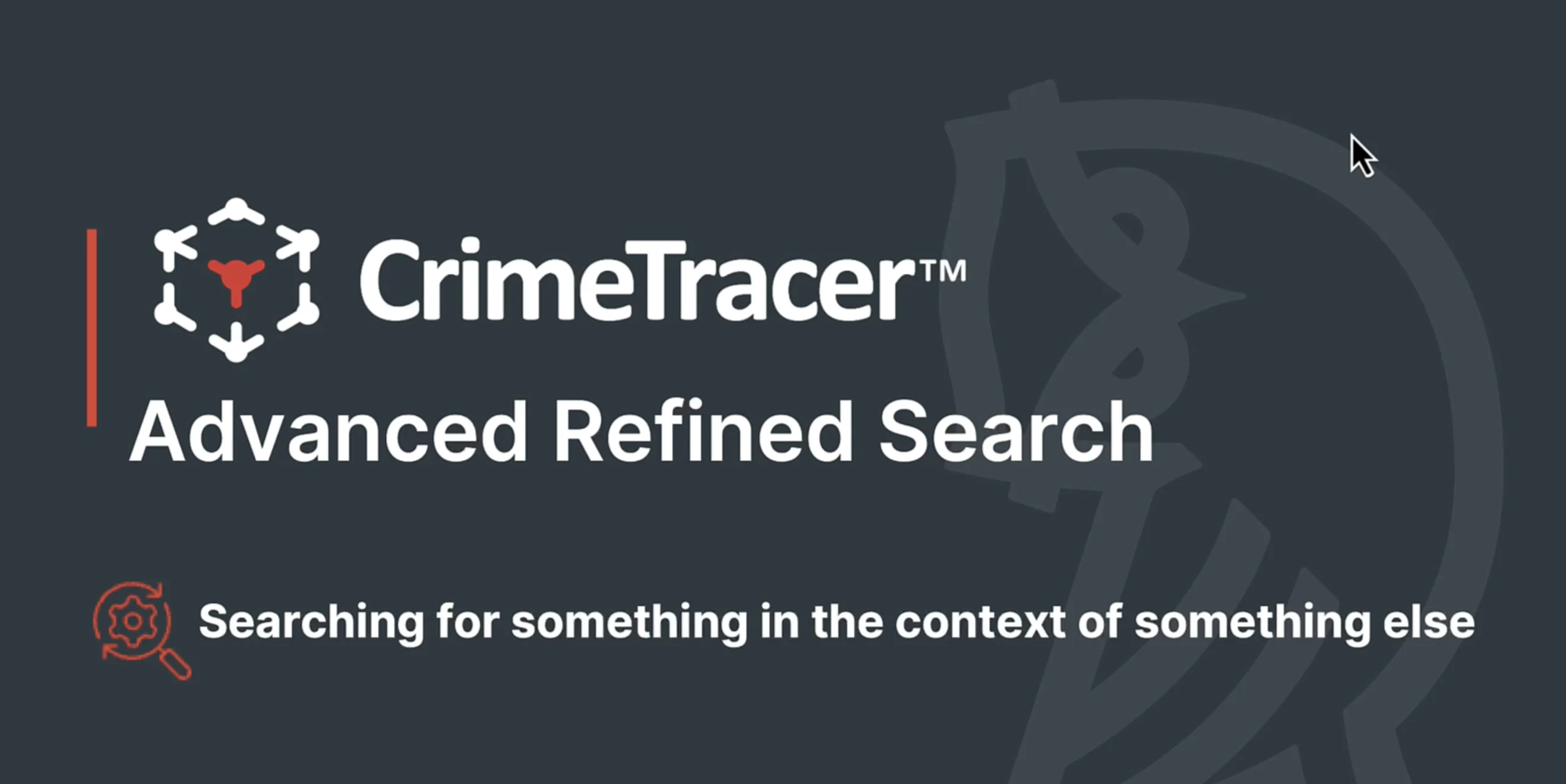Investigators sift through massive amounts of data in their day-to-day operations and rely on information-sharing, both within their own agency and across multiple agencies. Without access to enough information, finding and following up on the right leads would be like looking for a needle in a haystack. However, finding the right data can be a challenge. In this article, we will outline some of the top information-sharing obstacles between law enforcement databases and discuss how CaseBuilder® and CrimeTracer™ solve these challenges.
Challenge #1: Siloed Systems
It can be a challenge to leverage information across law enforcement databases when information is siloed. Police departments use record management systems (RMS) to document first-hand reports of incidents and encounters, but it’s a challenge to share data even from one RMS to another. Hundreds of vendors provide the record-keeping systems for thousands of agencies across the country, and most of these are customized in some way or another.
Furthermore, additional information is scattered across license plate reader results, computer-aided dispatch (CAD) records, warrant records, and other tools. Time is of the essence in every investigation, and when systems are siloed, too much time is spent trying to consolidate and corroborate relevant data at the risk of potentially leaving offenders at large to commit more crimes. According to a 2020 report from the Police Executive Research Forum, “Many police departments have a weak information technology infrastructure, which makes information-sharing difficult…In a survey of 749 agencies, only 14 percent had technology to search data shared across silos, 10 percent had data-mining tools for massive databases, and 5 percent had software that could discover connections between data.”
Challenge #2: Inconsistent Narratives
Record management systems capture a mix of structured, semi-structured, and unstructured data, which makes sharing information, especially among different agencies, another challenge. The structured data includes fields for such elements as date, type of call, car make and model if relevant, and so on. The reports also include an unstructured “narrative” section, in which the officer tells the story of the encounter in their own words: what they found, who they talked to, what the witnesses said, and so on.
Even in the structured data, reports may have inconsistencies. A date might be entered as January 20 or as 01/20, for example. But especially in the unstructured block of narrative text, the same element might be described in different ways. A police department in Arizona, for example, might have a report on an incident involving a man with a tattoo on his shoulder behind the wheel of a red Honda, while a department across the border in Nevada could be looking for a driver with a similar tattoo in a maroon Civic. While these could be the same person, if the information is trapped in siloes, neither law enforcement agency will get access to the info they need.
Challenge #3: Limitations with N-DEx
The National Data Exchange (N-DEx) is one of the most well-known law enforcement databases available from the federal government, but it only allows agencies to share a finite set of documents (such as incident, arrest, booking, incarceration reports, pre-trial investigations, and probation and parole records). It’s not a deep enough repository to contain all of the information an investigator might need to move a case forward. Furthermore, while N-DEx can “aggregate” documents from various agencies across the country into a single repository, it is not “consolidating” the entities (people, places, things) into unified records that can be investigated from a single point of reference. I.e. You still have to read all the reports to find associated people, vehicles, locations, etc.
How CaseBuilder and CrimeTracer Help Solve These Challenges
CaseBuilder and CrimeTracer are two powerful investigative tools that can solve some of these information-sharing challenges. CaseBuilder is a comprehensive case management platform that gives investigators tools for building long-term cases: access to a digital case folder for organizing, storing, and searching for case-related information, and the ability to collaborate with other investigators as well as prosecutors. CrimeTracer is a law enforcement search engine that retrieves and consolidates information from police repositories and other data sources, providing an essential tool for law investigators to use while assembling their cases in CaseBuilder.
Privacy and Compliance-Focused
Given the sensitive nature of data involving criminal investigations, law enforcement databases that comply with information security standards are of the utmost importance. Both CaseBuilder and CrimeTracer are compliant with CJIS guidelines, which address the collection, distribution, auditing, and retention of criminal intelligence. For example, CaseBuilder provides a Confidential Informant module that isolates that investigative data and adds strict controls.
Privacy concerns also extend to the narratives that we discussed earlier and can explain why many departments have reluctance around sharing these reports with relevant stakeholders. However, by not sharing these reports, investigators are missing potentially key opportunities to make progress with their case. For example, a narrative can contain initial impressions and witness testimony that may prove to be inaccurate or inconsistent with other documentation, which may not be discovered if departments don’t share those narratives with other local and state jurisdictions. Officers will also list things like vehicle descriptions or license plate numbers in the narrative that might not be included in Vehicle fields. Monikers and AKAs are also commonly only listed in narratives along with things like tattoo descriptions or accents that may be critical elements of an investigation. Furthermore, CrimeTracer provides an audit log to track all the people who’ve viewed a narrative, and it can be configured to not share the full RMS record until the case is marked closed.
Consolidation of Data
With CrimeTracer, investigators can use natural language search terms to look for information in more than 1.3 billion records across more than 40 data sources. Investigators can enter a search term like “man with tattoo on arm in red Honda” and filter the results by reporting agency, document type, year, or description, et al. They can further refine the results by searching for associations with other individuals, vehicles, location, and other criteria, in any combination. Rather than starting with a specific description, a search can also be initiated based on physical characteristics like height, weight, age range, and distinguishing features.
CrimeTracer consolidates all that information into one dashboard with links to the original data sources—those specific police reports in Arizona and Nevada, for example—as well as graphical representations of connections between people, vehicles, addresses, etc. in a dynamic “link chart.” It can highlight a single name that occurs in hundreds of records, enabling investigative teams to make quick connections that might have taken hours or even days before.
CrimeTracer is able to find and retrieve all this data because it has about 150 packaged connectors to most of the significant vendors’ products. Because of the connectors, CrimeTracer can pull in data from all those sources automatically—the investigator doesn’t have to worry about what format the data is in.
Besides the connectors, CrimeTracer’s search algorithm is built to understand variations in the way data is recorded apart from system-specific details. It will automatically cross-reference 01/20/1956 to January 20, 1956, for example, and has synonym dictionaries that will match “Honda sedan” to “Accord” or “Civic,” or “F150,” “Silverado,” and “Ram” to “pickup” or “truck.”
Case Collaboration and Data Sharing for More Effective Outcomes
CaseBuilder and CrimeTracer are both built to enhance collaboration among agencies. CaseBuilder integrates with RMS, automatically ingesting data shared to the N-DEx initiative but also writing updates back to the RMS when a case is cleared. These integrations follow the Information Exchange Package Documentation (IEPD 4.0) and National Information Exchange Model (NIEM) standards.
The more data available for CrimeTracer to sift through, the more information available to store in CaseBuilder, the more effective an investigation can be. It’s impossible to tease out relationships between data if the data isn’t there in the first place. That’s why it’s important for agencies to share as much data as they can with relevant stakeholders as soon as they can.







